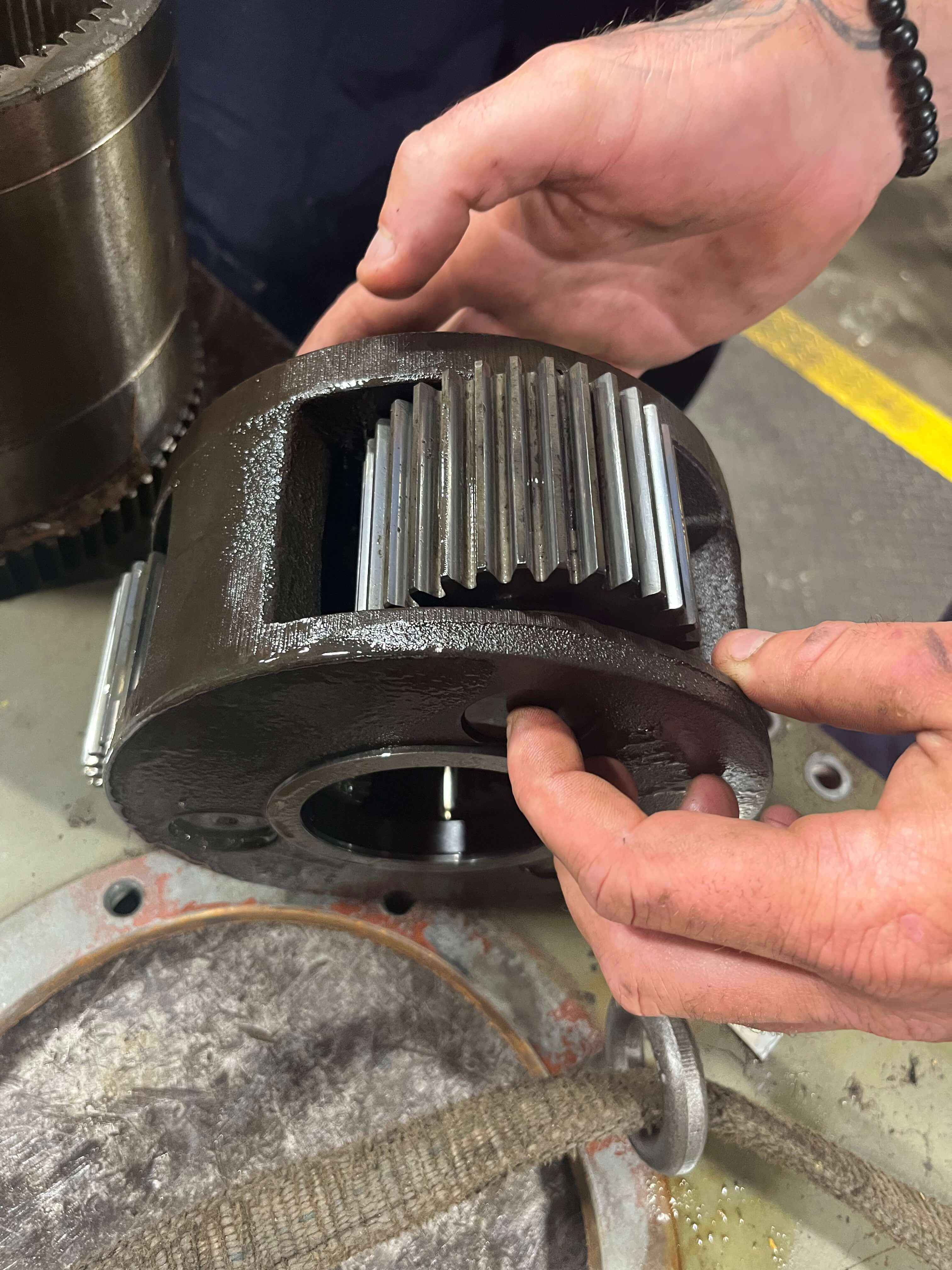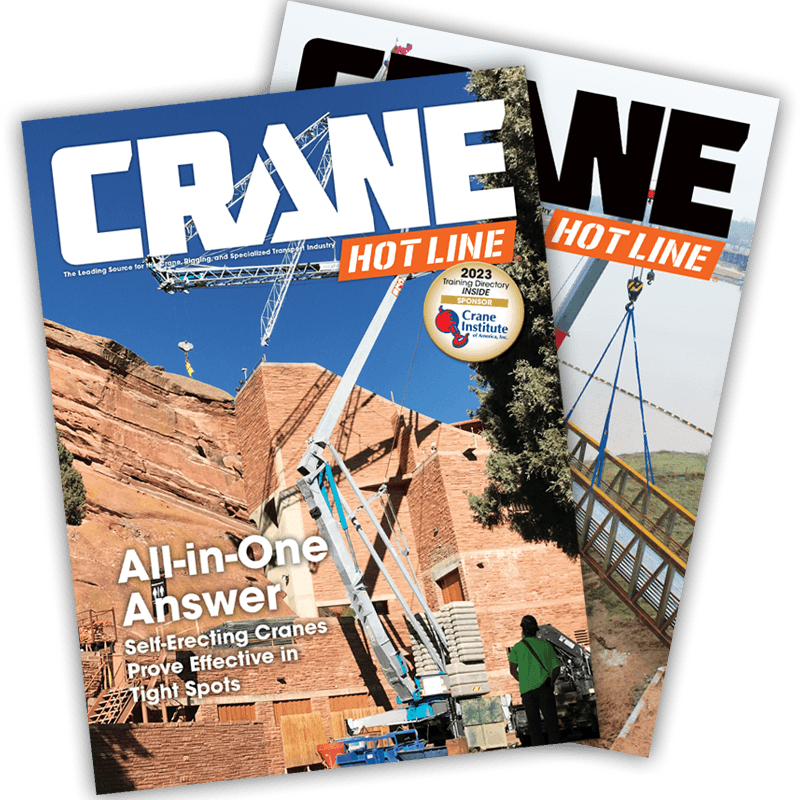Crane Safety Starts Here
The Importance of Hoist Maintenance
(Sponsored Content) — If you work in the crane industry, you know that safety isn’t something to take lightly. One of the most critical parts of a mobile crane is the planetary hoist—the part that actually lifts loads and sometimes even people. Keeping this hoist in top shape with regular maintenance and inspections isn’t just good practice, it’s absolutely essential for safe and reliable crane operation.
Why Hoist Maintenance Matters
Planetary hoists, like the popular BRADEN PD and CH Series, are complex pieces of equipment. They have to work perfectly every time to keep heavy loads secure. That’s why sticking to the manufacturer’s inspection schedules and industry standards is so important. Skipping inspections or delaying repairs can cause the hoist to fail, risking costly downtime — and more importantly, people’s safety.
What to Check Every Day
Before you even start lifting, a quick daily inspection can save a lot of trouble down the line:
-
Oil Level: Check the oil level every day if your hoist has a sight glass. If not, monthly checks are okay as long as there are no leaks. The oil should be between the minimum and maximum marks.
-
Breather Valve (Vent Plug): This little part lets gases escape from the hoist. It needs to be checked daily for damage or leaks. If it’s leaking oil or not working right, take the hoist out of service immediately. And never paint over it or replace it with a grease fitting—that can trap air and cause seal leaks.
-
Overall Visual Check: Look over the hoist for any loose bolts, pins, or worn parts. Inspect hydraulic hoses for wear or damage. Make sure safety features like anti-two-block switches are working properly.
-
Ratchet and Pawl Mechanism: If your hoist has this, ensure it’s engaging properly.
-
Warm Up the Hoist: Especially if it’s cold outside, run the hoist at low speed for a few minutes before full use to warm up the hydraulic and gear oil.
Every Few Months: The Quarterly Checkup
Once every few months, the hoist needs a more thorough look:
-
Brake Inspection: Planetary hoists use special brakes that hold the load in place when you’re not lifting or lowering. It’s critical these brakes work perfectly. If the load drifts when you let go of the controls, that’s a warning sign.
-
Corrosion and Damage: Check for rust or damage on the hoist body, fasteners, and drum.
-
Oil Sampling: Take a sample of the gear oil and send it for analysis. This helps catch wear or contamination before it causes serious problems.

The Annual Full Inspection
Once a year, it’s time for a full check that includes:
-
Oil Change: Replace the gear oil after a sample has been taken.
-
Clean and Inspect the Vent Plug: Remove it, clean it, and check for damage.
-
Look for Shock Loading Damage: Sudden heavy shocks can cause hidden damage over time. Watch for signs like wire rope wear, broken strands, or any drifting loads.
-
Brake Testing: Make sure the brake can hold the load securely under real conditions.
Deep Dive: The Teardown Inspection
Every 3 to 5 years—especially if the crane is used to lift people—a full teardown is needed:
-
Disassemble and Inspect: Take the hoist apart to clean and check every part. Replace anything cracked, worn, or corroded—pins, gears, bearings, brake parts, you name it.
-
Replace Key Components: Parts like the brake clutch and pawl system need attention here.
-
Magnetic Particle Inspection (MPI): This test helps spot any hidden cracks inside the gears before they lead to failure.
-
Seal Replacement: Put in new seals and O-rings to prevent leaks.
-
Test Everything: After rebuilding, pull test the hoist to its rated load and dynamically test under partial load to make sure it’s fully functional.
-
Oil Change After Rebuild: Change the oil again after the first 100 hours of operation on the rebuilt hoist as recommended for any new hoist installations.
The Bottom Line: Don’t Skip Maintenance
Ignoring these inspections or maintenance steps risks losing control of the load, equipment damage, and worse—serious injuries or death. If the hoist makes strange noises or behaves oddly, stop using it immediately and get it checked by a professional.
Building a Safety-First Culture
Keeping detailed records of inspections, repairs, and maintenance is a smart move. It helps you stay on top of your hoist’s health and plan ahead. Following these simple routines means your crane will run better, last longer, and most importantly, keep everyone safe on the job.
Regular maintenance of your planetary hoist isn’t just a box to check—it’s a critical step in making sure your crane operates safely and smoothly every day. Keeping the hoist healthy means fewer surprises, less downtime, and peace of mind for everyone involved.



